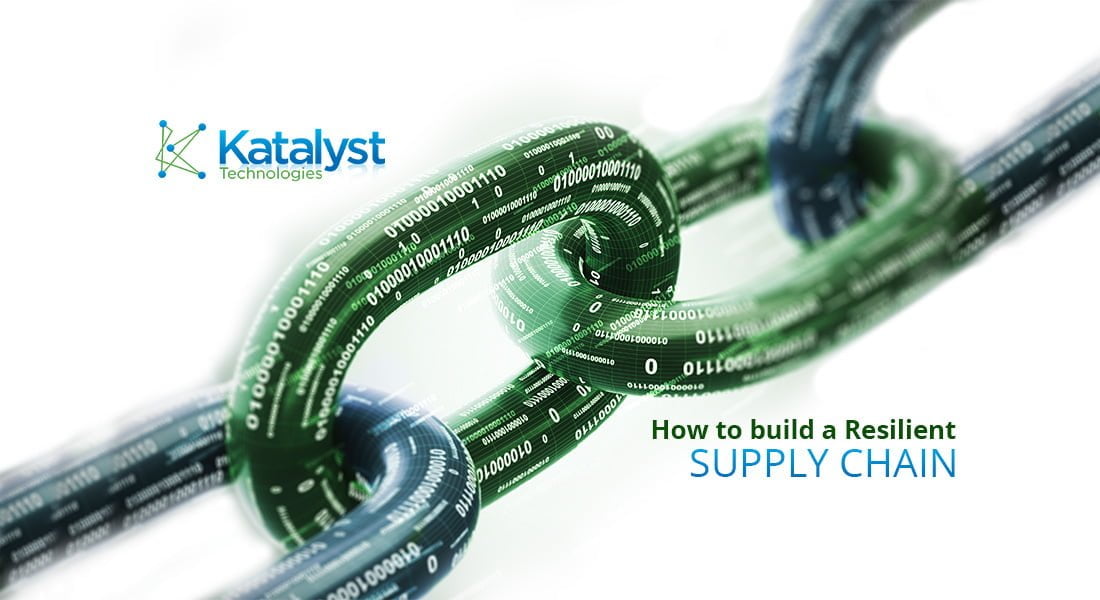
Disruptions from minor material shortages to large-scale natural disasters stopping up transportation have always been something every Resilient Supply Chain must be prepared for. However, some events are so sudden it is nearly impossible to properly prepare, with no better example being the COVID-19 pandemic. In mere days, healthcare products and groceries were flying off store shelves. Many supply chains could not properly shift production from their primarily Asian manufacturers to account for this sudden demand.
The pandemic put many companies to the test, something their supply chains were not ready for, exposing many issues in the inflexible nature they operate. With a “new normal” established, it is now more important than ever for companies to look at how COVID-19 impacted their business to improve their supply chain’s resilience for the future.
At Katalyst, we are no strangers to assisting clients start or improve their E-commerce business through the pandemic. Here are five critical factors we recommend considering when planning to build up supply chain resilience in your business.
1) Control your Overhead
In the business world, “resilience” refers to the ability of a company to show flexibility, allowing them to roll with the punches frequently thrown at them and quickly adjust to any change. However, it is much more challenging to bounce back from a monetary loss than a minor supply issue, and your wallet is the first thing a disruption in the business world will hit.
Consider using third party services like Katalyst to help take the load off your shoulders! Many E-commerce businesses do not have dedicated logistics or supply chain specialists as a part of their staff, leading to overpaying for materials or being blindsided by industry-changing events. Katalyst can help set up and monitor your business to optimize your transportation or warehouse costs.
2) Analyze Your Data
Looking at the hard data for your business is always vital, even more so if you want to improve your supply chain management. Through analyzing the information from your business’s day-to-day functions, you can make sure your operation is running according to plan. By measuring each step of your supply chain, from the manufacturing of your products to the shipping of the final product, you can better understand how things run at your company.
A good Warehouse Management System, like Katalyst’s Celero WMS, can show you how long it takes products to be delivered, preferred shipping methods, and more to help you fully understand how your supply chain functions.
3) Optimize Your Supplier Network
Communication is always key within the different parts of a company, and the same stands for your suppliers. These vendors can make or break your business, as just one falling short or experiencing an issue can cause everything to freeze up for a time. Starting and maintaining deep relationships with your suppliers can help provide your business with information on upcoming issues that allow you time to adapt to an upcoming shortage of parts.
If you do not have a small group of reliable suppliers, it would be wise to keep a large network of vendors ready to go when necessary to take into account the lack of communication from a closer relationship.
4) Better Manage Your Inventory
When a disruption happens globally, there is a significant chance a company will not meet demand due to supplier shortages or will be packed with products that no one wants anymore. With how quickly things can turn on a dime, it is smart to make sure your inventory is prepared to handle a sudden change.
Splitting your inventory across multiple warehouses is always a great plan, as not only are you able to expand your reach across the world, but if one location happens to close down due to issues, customer demands can still be met. Redundancies can also be created across your supply chain, resulting in a nice cushion of spare supplies and inventory to fall back on if a disruption occurs in the world. Katalyst’s Celero ERP supply chain software can help you analyze that data and how much redundancy you can spare or track inventory numbers across your warehouses.
5) Be Flexible and Accept Criticism
When crises hit, it is okay to admit that you were blindsided, as things always inevitably go wrong in some manner. However, the most important way to prove your business is strong is by showing a willingness to learn from the mistakes that lead to supply chain issues. Keep track of the data gathered during these disruptions to see what the company could have done better. Incorporate these lessons into your daily supply chain to prevent the same problem from happening again through training employees and tweaking production methods.
In Conclusion
Disruptions can both be well known in advance yet also, at times shockingly, unpredictable. When hit by these crises, sometimes the only thing your company can do is brush itself off and start again to be prepared for the next event. Through the COVID-19 pandemic and many other disruptions, Katalyst Software Services Limited has helped many small and medium businesses survive and improve on their responses via supply chain management software like CloudCelero. If you want to know how Katalyst or CloudCelero can help you make your supply chain more resilient, Contact us today!

